I’m sure there are one hundred ways to build a work bench, and all of them are correct if they meet your needs.
…………………….– Danny Proulx, Building Woodshop Workstations
You wanna brew up an instant argument? Find a group of woodworkers and ask them their opinions about brands of pick up trucks.
For the record, I drive a Toyota Corolla. I chose this car because it gets me from point A to point B with a modicum of comfort while using as little gas as possible. It has a reputation for reliability. The fact that it also happens to be able to hold my entire family is a bonus. Other than that, I really couldn’t care what make the car is.
 But, when you drag Ford, Chevy, Dodge, Nissan, Toyota and other manufacturers into the mix, people become defensive about their trucks. Boastful. Arrogant. “My Ford will tow your Chevy to the junk yard when it dies.” “My Dodge is a beast and will out perform both of your toy trucks.” This conversation can drag on for hours while people go back and forth essentially over what is a utility vehicle designed to carry a load of items.
But, when you drag Ford, Chevy, Dodge, Nissan, Toyota and other manufacturers into the mix, people become defensive about their trucks. Boastful. Arrogant. “My Ford will tow your Chevy to the junk yard when it dies.” “My Dodge is a beast and will out perform both of your toy trucks.” This conversation can drag on for hours while people go back and forth essentially over what is a utility vehicle designed to carry a load of items.
In much the same way, woodworkers have a tendency to look at their workbenches and compare how they stack up to others. Whether a woodworker believes a huge steamed beech bench modeled after some European standard is the only way or a solid door on sawhorses is their preference, a great deal of personality is invested in the decision.
I have been looking at my workbench recently. Sure, Big Ugly still answers the call without a whine or whimper each time I go into the shop. She serves me well. But, I’m thinking it might be time to do some upgrading. Some extra features. A little more heft.
 That’s where I’m getting stuck.
That’s where I’m getting stuck.
At the recommendation of many woodworkers, I recently picked up Workbenches, the first book written by Popular Woodworking Editor Chris Schwarz. The book has been touted as a seminal work, required reading for woodworkers of all levels of experience.
I’ve got to hand it to him. I think Chris has written a very well researched book on the topic of workbenches. Besides old photos of woodworkers actually using their benches from bygone ages, his book is replete with drawings, block prints and ads from tool and bench manufacturers from years gone by. This really helped me get an idea of just how these specialized shop tools has evolved from the first flat rock to today’s high-tech offerings.
Chris offers outstanding plans with measured drawings and step-by-step instructions in exacting detail. Chapters devoted to stock selection, bench accessories and the best methods to accomplish certain tasks make this book an invaluable reference for any shop. It’s written in a style where – yes – I didn’t want to put it down.
But, I do have a quibble with the author on a few points.
 No doubt Chris is imminently more qualified than I to write about all things woodworking. He’s worked with the best. He’s held some of the most expensive tools ever manufactured in his own hands. He’s perched in an enviable position from where he can monitor the latest developments in the craft. When he speaks, his voice carries with it a great deal of authority.
No doubt Chris is imminently more qualified than I to write about all things woodworking. He’s worked with the best. He’s held some of the most expensive tools ever manufactured in his own hands. He’s perched in an enviable position from where he can monitor the latest developments in the craft. When he speaks, his voice carries with it a great deal of authority.
For some reason, his book hit me the wrong way. Chris makes excellent points about the shortcomings of many bench designs. He validly points out that many benches today are glorified kitchen counters – with no access to clamp materials from below – or overgrown dining room tables. However, the way he belabors the point seemed to set uneasily with me.
 He speaks about other designs – some of which he designed for Popular Woodworking – as if they are somehow beneath a serious woodworker. “Build it like that, and you’ll be terribly disappointed,” is a common refrain. Perfectly serviceable benches such as the 24 hour bench and the $175 bench are dismissed as ‘starter’ benches, perfect for customizing as you would an old Volkswagen Beetle.
He speaks about other designs – some of which he designed for Popular Woodworking – as if they are somehow beneath a serious woodworker. “Build it like that, and you’ll be terribly disappointed,” is a common refrain. Perfectly serviceable benches such as the 24 hour bench and the $175 bench are dismissed as ‘starter’ benches, perfect for customizing as you would an old Volkswagen Beetle.
What iced me from the book was when he pointed out the shortcomings of the benches found in the shops of Tage Frid, James Krenov and Frank Klausz. There is no question that these men have built incredible works of craft – and art – from their modest benches. While maybe not the ‘perfect’ forms, the quality these men have produced speaks volumes for their ability to use these benches effectively.
And, that’s without saying a word about the Japanese masters such as Toshio Odate who create their masterworks without even touching a western-style bench.
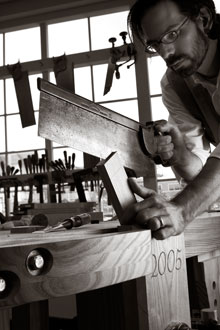 Chris describes his first exposure to the French-inspired Roubo workbench as a near religious experience – divine inspiration into the perfect form and function of what a bench could become. In some ways, I wish he would position himself as less of a Zealot when considering bench forms. Unfortunately, there will be many starting woodworkers who will walk away from this book thinking that any workbench – other than those recommended by Chris – would be a waste of time. Indeed, I can see many up-and-coming woodworkers stymied by the impression that they MUST build a Roubo before they dare touch a tool.
Chris describes his first exposure to the French-inspired Roubo workbench as a near religious experience – divine inspiration into the perfect form and function of what a bench could become. In some ways, I wish he would position himself as less of a Zealot when considering bench forms. Unfortunately, there will be many starting woodworkers who will walk away from this book thinking that any workbench – other than those recommended by Chris – would be a waste of time. Indeed, I can see many up-and-coming woodworkers stymied by the impression that they MUST build a Roubo before they dare touch a tool.
Listen; there are dozens – closer to hundreds – of published plans out there to help you build a workbench. From ultra-quick, ultra-cheap weekend benches knocked out a few 2 x 4’s and some plywood all the way to the could-double-as-an-altar-in-some-minor-woodworking-religion uber-benches – there’s something out there for everyone.
Before you go out and build your bench – consider doing what I’m doing. Look at plans. Lots of ’em. Ask yourself some questions. What am I going to use this bench for? What’s my budget? What skill level do I have? How much space is there in my shop?
 Sure, you can’t plan for any eventuality. I could hit the lottery next week, quit my day job and woodwork full time. Of course, my kids could need glasses, braces and piano lessons too…
Sure, you can’t plan for any eventuality. I could hit the lottery next week, quit my day job and woodwork full time. Of course, my kids could need glasses, braces and piano lessons too…
What kind of bench you work on is a personal decision you will have to make. Ask around. Take all of this input with a grain of salt, understanding that everyone will offer his or her opinion based on what works for them.
Then, go boldly, build your bench – and get back to the fun stuff – woodworking!
By the way, here are some resources I’ve already checked out:
- 24 Hour Bench – Popular Woodworking
- $175 Bench – Popular Woodworking
- Build A Workbench – Popular Mechanics
- A Traditional Workbench
- A Heavy Duty Workbench – The Woodworker’s Website Association

 As much as I hate to say it, my wife and I love TV. I know, we live in Florida, surrounded by all of the natural beauty people come to see on vacation. We should be living outside.
As much as I hate to say it, my wife and I love TV. I know, we live in Florida, surrounded by all of the natural beauty people come to see on vacation. We should be living outside. For me, well, there is the History Channel. And the Discovery Channel. And then there’s PBS. What I love most about PBS is the fact that there are woodworking shows on it.
For me, well, there is the History Channel. And the Discovery Channel. And then there’s PBS. What I love most about PBS is the fact that there are woodworking shows on it.  So, what other options are out there? There is the
So, what other options are out there? There is the  Since we have the basic cable package, you might think that
Since we have the basic cable package, you might think that  What’s a woodworking show junkie like me to do? Fortunately, help has come in the form of the Internet. Many forward-thinking bloggers such as
What’s a woodworking show junkie like me to do? Fortunately, help has come in the form of the Internet. Many forward-thinking bloggers such as  And, if you can’t get your fix there, there’s always the
And, if you can’t get your fix there, there’s always the 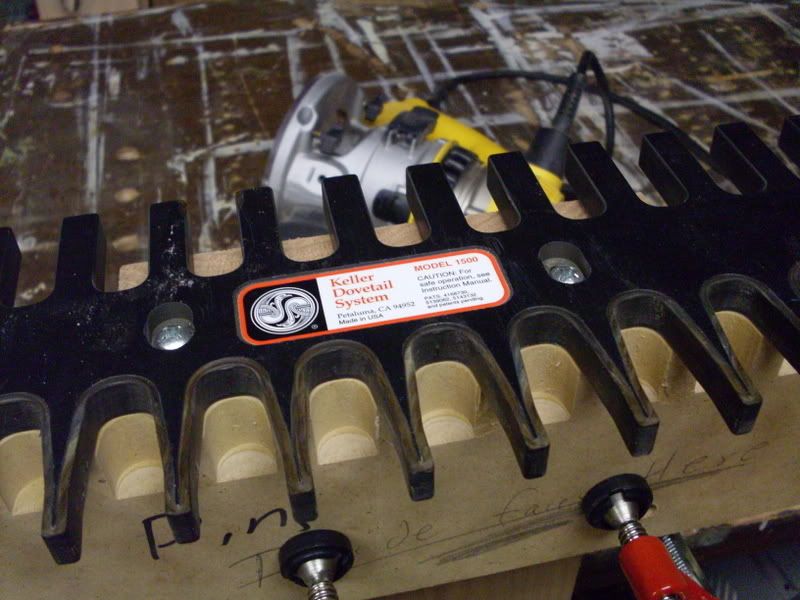

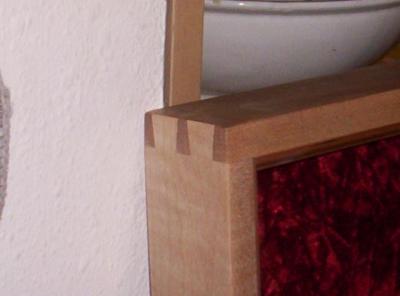 The one caveat with this jig – as with many others – is you have to carefully mark where the joints will align. This is a very important skill to master whether you cut the joints by hand or by machine. A striking knife – even a cheap Xacto knife from an office supply store – will work well.
The one caveat with this jig – as with many others – is you have to carefully mark where the joints will align. This is a very important skill to master whether you cut the joints by hand or by machine. A striking knife – even a cheap Xacto knife from an office supply store – will work well.
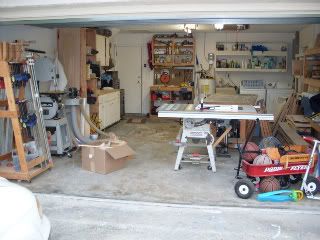
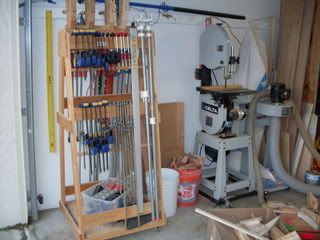
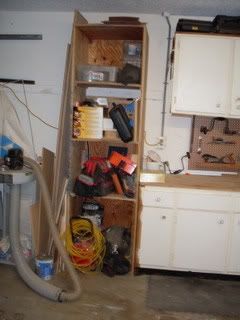
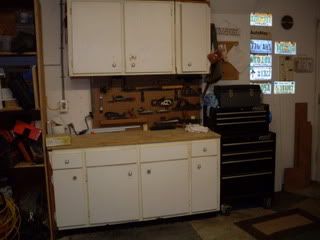

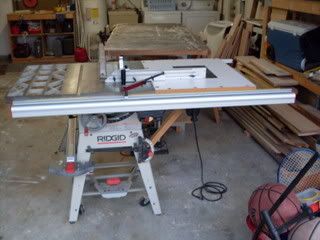
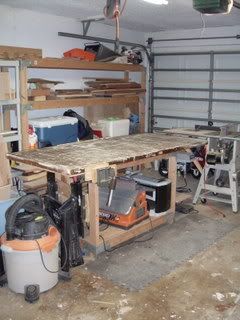
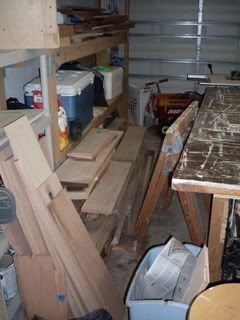
 Then, why is it that when it comes to woodwork, there are so many ‘experts’ out there who claim to know exactly where the line between craft and art is drawn?
Then, why is it that when it comes to woodwork, there are so many ‘experts’ out there who claim to know exactly where the line between craft and art is drawn?
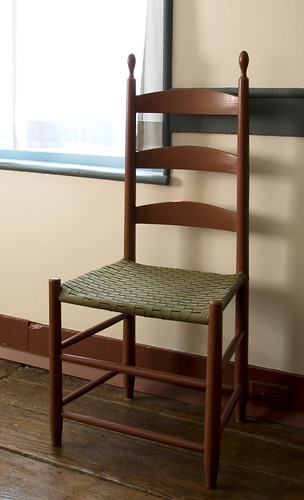
 At my job, this is the third year that the
At my job, this is the third year that the  When it comes to woodworking, there are lots of plans out there. Plans to build new shops. Plans to squeeze the maximum amount of space out of your existing shop. Heck, there are even plans to clean your shop. But, those are usually put at the bottom of the to-do list.
When it comes to woodworking, there are lots of plans out there. Plans to build new shops. Plans to squeeze the maximum amount of space out of your existing shop. Heck, there are even plans to clean your shop. But, those are usually put at the bottom of the to-do list. The next type of plan are shop-drawn ones made to reproduce an existing piece of furniture. Whether it’s from a drawing of a project you saw in a museum or a picture of an exquisite antique piece you wanted to bid on at an auction, these projects can be fun to plan and build. I find myself looking at pictures of projects from the modern masters –
The next type of plan are shop-drawn ones made to reproduce an existing piece of furniture. Whether it’s from a drawing of a project you saw in a museum or a picture of an exquisite antique piece you wanted to bid on at an auction, these projects can be fun to plan and build. I find myself looking at pictures of projects from the modern masters –  Draw the piece out to scale. Once you start cutting and shaping boards into component parts, you will want to know exactly how large that piece needs to be.
Draw the piece out to scale. Once you start cutting and shaping boards into component parts, you will want to know exactly how large that piece needs to be.